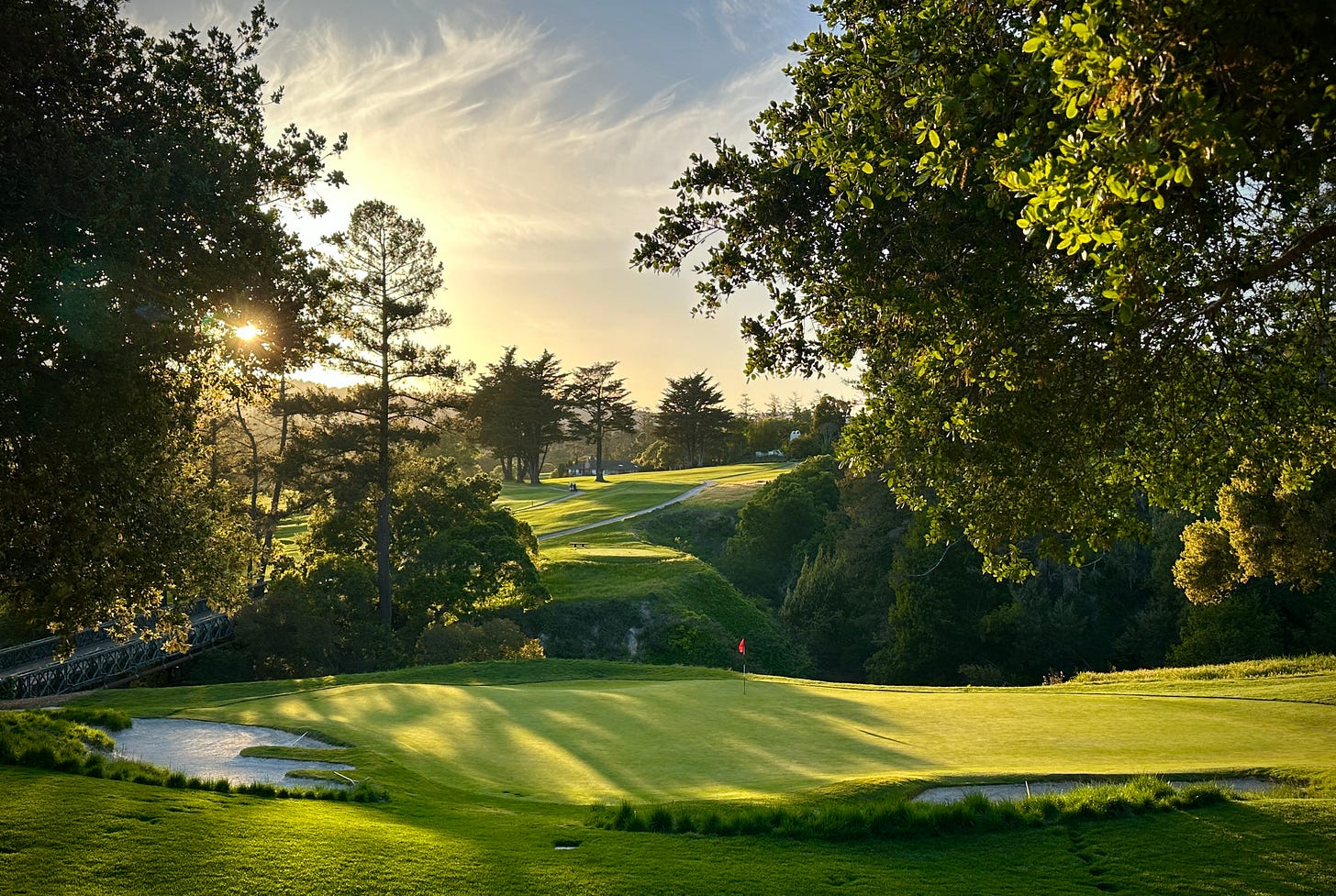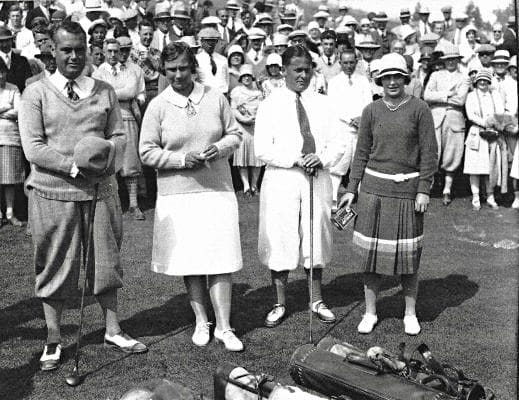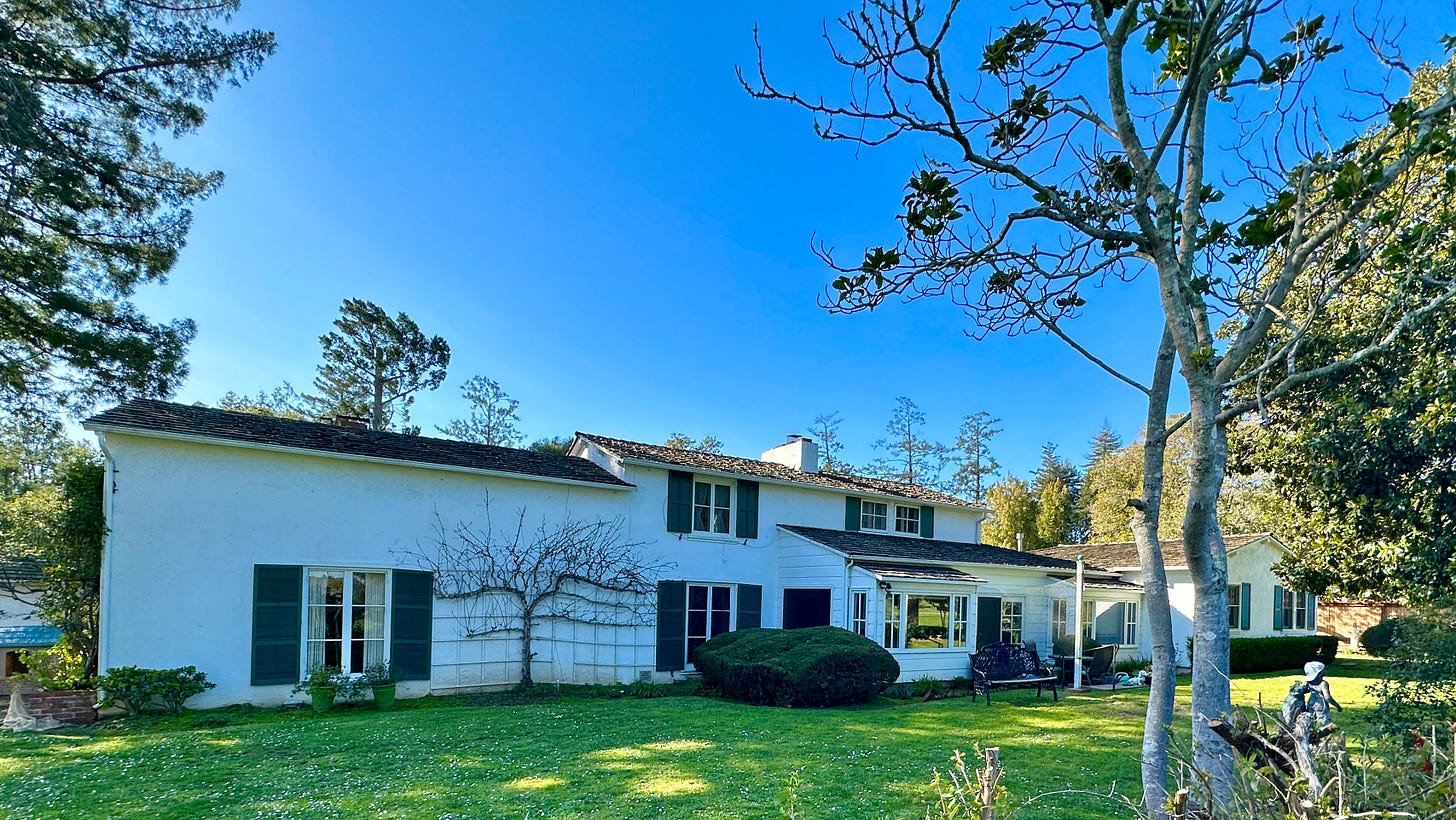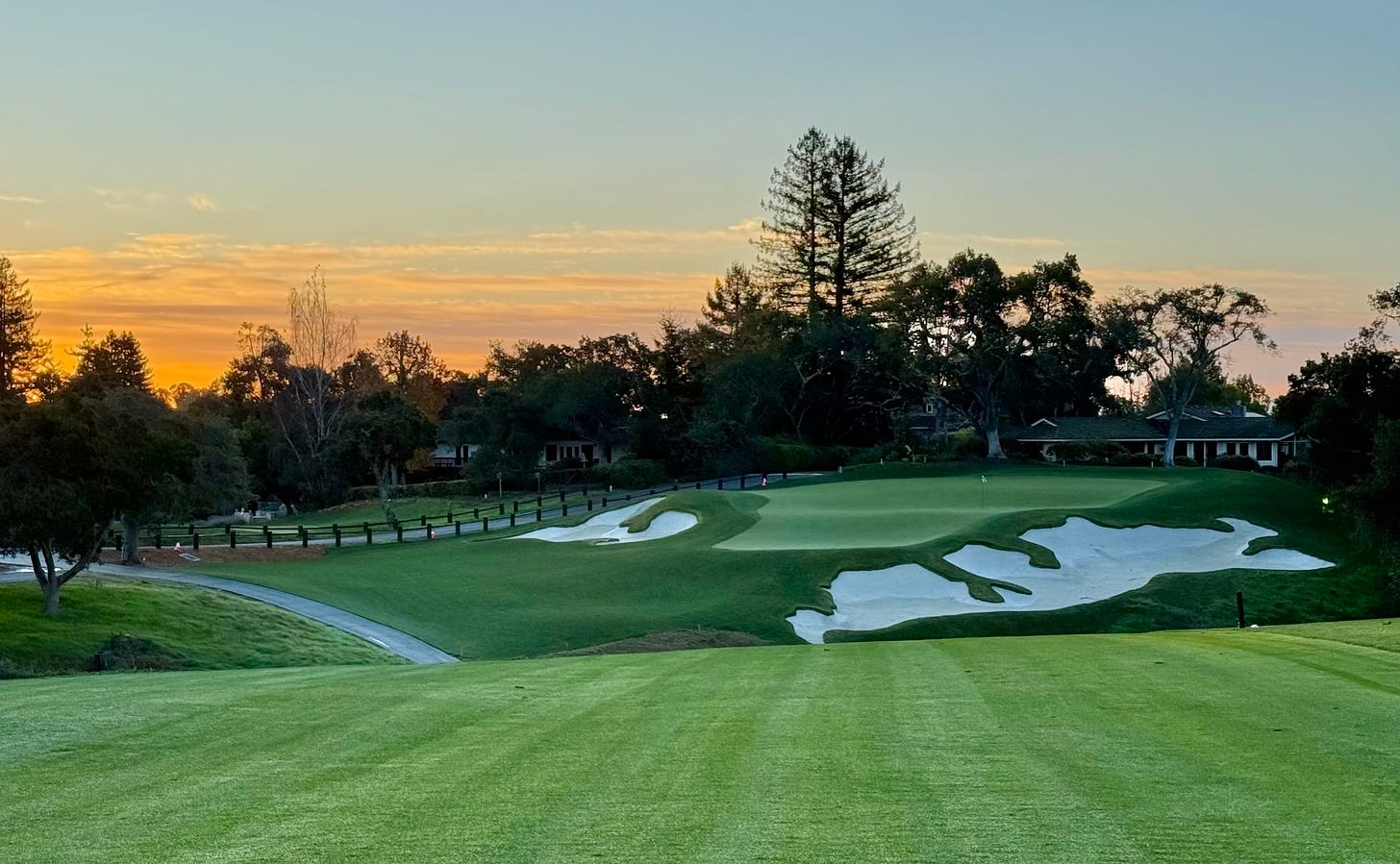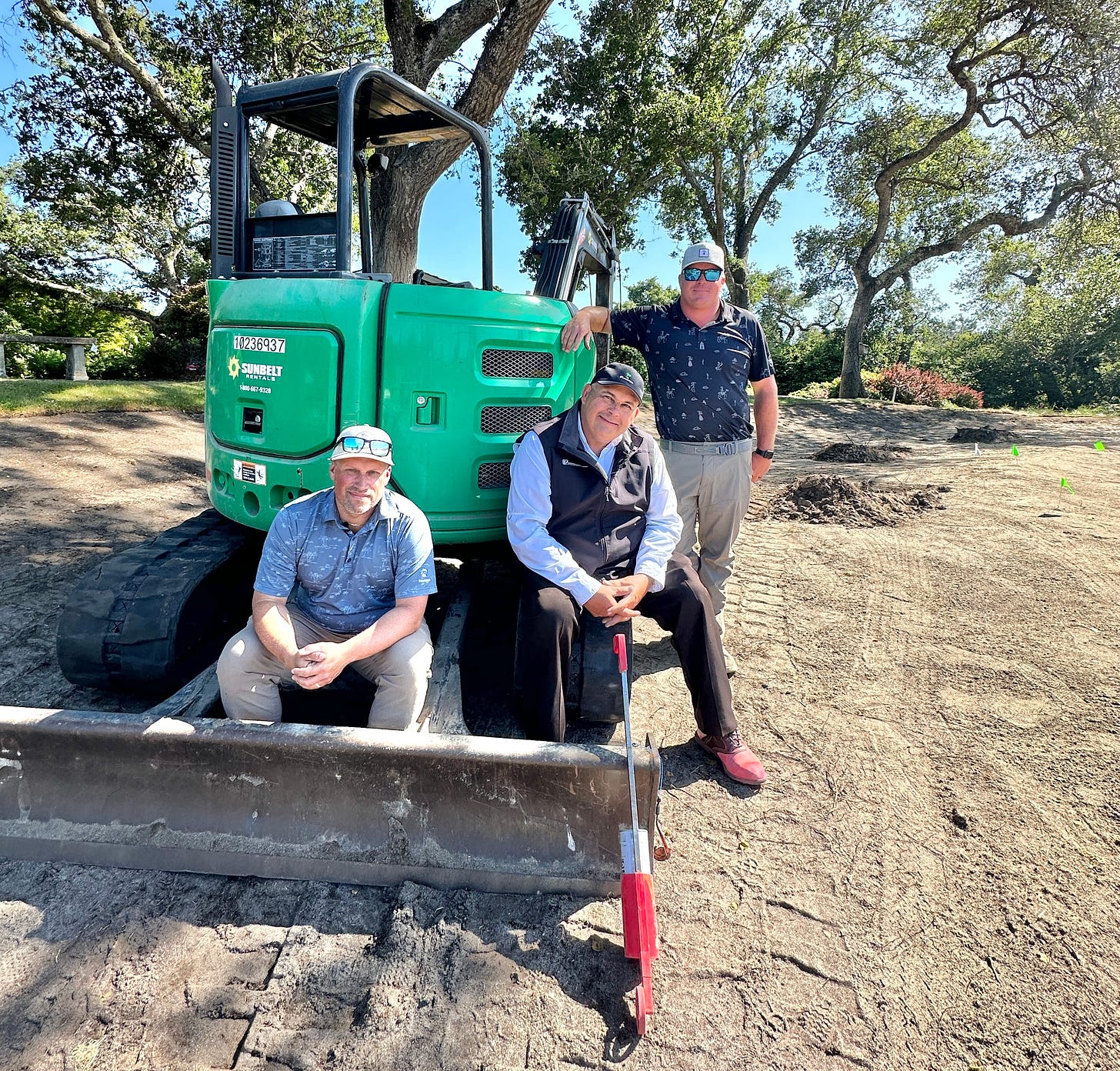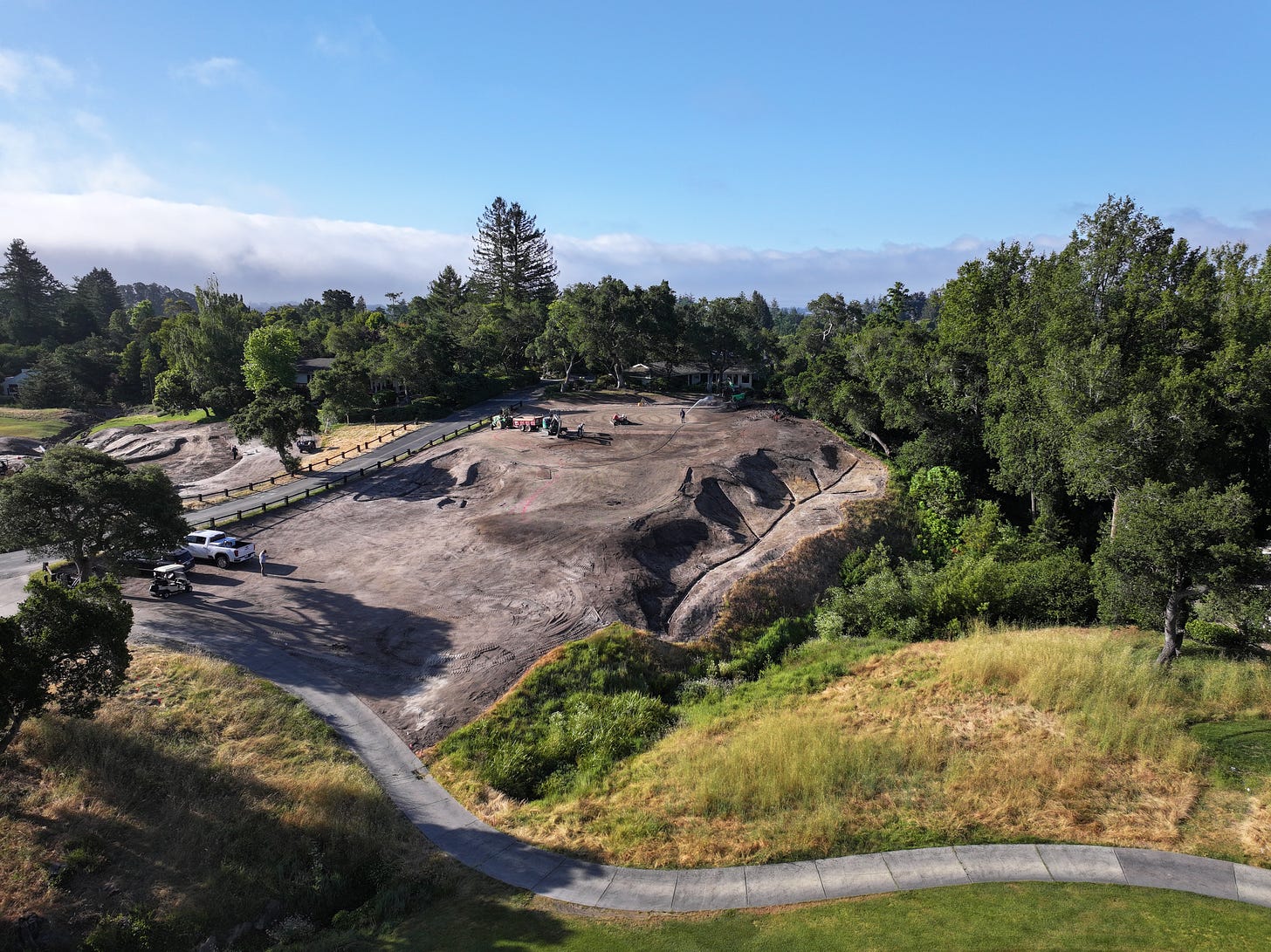Restoring Pasatiempo's Greens
A two-part docuseries on how and why the famed California club went back to the future
By way of Dr. Alister MacKenzie, the famed golf course architect, and Marion Hollins, the female pioneer, player, developer and architect, not to mention Bobby Jones, who played in the opening day foursome and fell in the love with the work of MacKenzie and Hollins, Pasatiempo in Santa Cruz is forever entrenched in the fabric of golf in America.
(September 8, 1929: Cyril Tolley, Marion Hollins, Bobby Jones and Glenna Collett)
Dating back to 1929, this (mostly) public course has a rich history. But life for the course and club hasn’t always been easy. There have been economic struggles, agronomic downturns and there was a rather famous fight for reclaimed water, which was resolved in 2016.
And then there was this issue with the greens. All of them.
The club leadership knew it, Justin Mandon, the course superintendent knew it, and Jim Urbina, the course architect who had worked for a better part of two decades tweaking and restoring the course, but not the greens, also knew it. And through a thoughtful and rigorous process, all of the above convinced the members/shareholders of the club that the putting surfaces needed to go back to the future.
Again, these aren’t just any set of greens. The Pasatiempo greens are a collection of what even the snobbiest of the architectural critics would consider some of MacKenzie’s best work. And that’s comparing them to the likes of Augusta National, Royal Melbourne, Crystal Downs and Cypress Point.
Always worth noting, MacKenzie lived in a house off the sixth fairway of Pasatiempo, which is where he died in 1934. A fact that has to be considered when assessing what the good doctor himself thought of his work on that wildly undulating slab of real estate.
And regardless of almost a century of aging and evolving, top-dressing and sand-splashing, severe conditioning issues and agronomic stress—above and below the ground—and the fact that, given today’s average green speeds, Mandon and his staff were managing a limited number of fair and reasonable pin placements per green. In some cases, like the 18th green, one could argue they were down to one.
But to cut through the fat here, and to actually go back to the beginning, not only of the building of Pasatiempo but also the beginning of this approved restoration project, the looming question for everyone in the board rooms, at the ballot boxes, sitting in bar stools, tapping on keyboards, pontificating on social platforms, spinning around in skid steers or operating excavators:
“WHAT WILL THEY DO TO THE 16TH GREEN?!”
In the Louvre, there is a lot of great art but there is only one Mona Lisa.
This set of greens could all be considered pieces of art work. But there is no debate, the 16th green is Pasatiempo’s Mona Lisa.
An excerpt from britanica.com on how and why the Mona Lisa is so special:
The sense of overall harmony achieved in the painting—especially apparent in the sitter’s faint smile—reflects Leonardo’s idea of the cosmic link connecting humanity and nature, making this painting an enduring record of Leonardo’s vision. In its exquisite synthesis of sitter and landscape, the Mona Lisa set the standard for all future portraits.
Cut to Pasatiempo’s 16th green:
The overall harmony and the cosmic link connecting humanity and nature, in its exquisite synthesis of golf and landscape, the multi-tiered putting surface is an enduring record of MacKenzie’s vision and set the standard for all future greens.
Very strategically and certainly not by accident, the work to restore the Pasatiempo greens was started in April, 2023, and it has gone in nine-hole chunks, starting with the front-nine.
And that was for several reasons, but most notably to give Urbina, Mandon and Earth Sculptures at least nine greens to warm up on before tending to what was going to happen on the back-9, and more specifically, the 16th.
With at least four greens within the green and more than 10-feet of slope from back to front, just beyond the fairway of what was once used as a steeplechase track, the 16th green would present the highest hurdles for all involved.
They had images, notes and various quotes about the 16th green. Urbina and team walked, talked, deliberated, debated and dug down into the sand to determine what could and should be done.
(Dream Team: Justin Mandon, Jim Urbina and Theisen Downing of Earth Sculptures)
Given the importance of this club, course and the legacy of Alister MacKenzie, this couldn’t be a guessing game.
“Jim Urbina can’t compete with Alister MacKenzie, Marion Hollins and Robert Hunter,” says Urbina. “But that being said, and after the last few weeks and months of watching people play it and hearing from people who have played it, I’m 100-percent convinced we achieved the architectural intent of that green.”
In what could be considered, and often looked like, an archaeological excavation, the assembled team of experts went one layer at a time, rewinding the clock of evolution.
“We did the right thing,” says Mandon. “Not only from a sustainability standpoint, because it wasn’t sustainable. But Jim did the right thing artistically to bring these greens back to what they’re supposed to be, which is, they’re still Pasatiempo greens. If you’re above the pin, you’re still going to struggle. That’s what’s really important. We not only did the right thing from a sustainability standpoint, but from an architectural standpoint, Jim hit it out of the park.”
This is it, an in-depth look at what happened in the dirt of every green at Pasatiempo, but this two-part series is through the lens of what they did to restore the 16th green.
We hope you enjoy them as much as we enjoyed documenting this mind-bending restoration.
EPISODE 1:
EPISODE 2:


